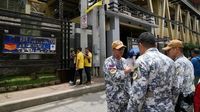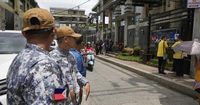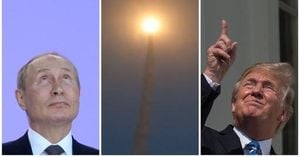On September 3, 2025, the Philippine Stock Exchange Index (PSEi) took a noticeable tumble, closing at 6,082.93—a drop of 0.75 percent or 45.96 points. This decline, according to Philippine Daily Inquirer, was not just another blip in a volatile market, but a direct reflection of deep-seated macroeconomic issues plaguing the country. At the center of the storm: a sprawling corruption scandal involving multibillion-peso flood control projects that has rocked both the government and the public’s trust.
The broader All Shares Index mirrored this downbeat mood, slipping 0.47 percent (17.41 points) to 3,663.62. Trading was notably sluggish, with a market value turnover of just P4.99 billion. Only holding firms and the mining and oil sectors managed to eke out gains, while the property sector bore the brunt of investor jitters, suffering the largest losses of the day. As the dust settled, the market counted 91 gainers, 109 decliners, and 56 unchanged—a snapshot of a market wrestling with uncertainty.
"The local market extended its decline as lingering headwinds continued to weigh on sentiment," Japhet Tantiangco, research head at Philstocks Financial Inc., told Inquirer. He pointed squarely at the corruption issues surrounding the country’s flood control projects, the persistent weakness of the peso against the US dollar, and uncertainties over US tariff policies as key drivers of this pessimism. It’s a cocktail of woes, but the flood control mess has taken center stage in recent days.
Behind the numbers lies a scandal that’s been brewing for months but has now erupted into full public view. On September 2, 2025, the Department of Finance (DOF) revealed a staggering estimate: the Philippine economy may have lost between P42.3 billion and P118.5 billion over the last two years due to corruption in these flood control projects. Finance Secretary Ralph Recto, speaking during a Senate finance committee briefing, explained that the economic fallout translated into the loss of roughly 95,000 to 210,000 jobs—an enormous hit for a country striving to recover from pandemic-era setbacks.
Recto didn’t mince words. “Raising revenues is no joke, and you see that it’s not going to the right projects to benefit Filipinos. Other projects even became ghosts,” he lamented, as reported by Rappler. In a candid moment with reporters, Recto added, “It already has affected our growth for sure. We’re just learning of the extent of the problem in flood control projects, so if that money was spent better, we could have grown by 6%.” For a government that has missed its economic growth targets two years running, the implications are profound.
But how did things get so out of hand? The answer, it seems, lies in the tangled web of budget proposals and oversight—or the lack thereof. Senators at the finance committee hearing flagged numerous duplicate funding requests in the Department of Public Works and Highways’ (DPWH) flood control budget, with some projects requesting precisely the same amounts. Department of Budget and Management (DBM) Secretary Amenah Pangandaman explained that the proposals came from the DPWH, which lacks the technical expertise to scrutinize individual line items. The DBM and the Development Budget Coordination Committee (DBCC), she said, merely set the overall budget level, leaving the specifics to the implementing agency.
That explanation did little to satisfy lawmakers. Senator Bam Aquino called for the DPWH’s budget proposal to be returned to the executive branch for revision, arguing that there was still time to root out duplicates and suspicious projects. Senator Loren Legarda went a step further, suggesting the deletion of the DPWH’s entire budget to allow new amendments or a supplemental budget to be submitted. Pangandaman responded that DPWH Secretary Vince Dizon—recently transferred from the Department of Transportation after his predecessor’s resignation—was already reviewing the budget and would provide a department errata to the House of Representatives. Whether the House would accept these changes, she admitted, was an open question.
President Ferdinand Marcos Jr., for his part, has not shied away from the controversy. As Rappler noted, he lamented the “insertions” that found their way into the 2026 National Expenditure Program, insisting that the budget needed to be properly “cleaned out.” The president and Congress have since launched a full-scale investigation into the alleged corruption, a probe that could implicate public works officials, engineers, construction firms, and politicians. The scale of the scandal has sparked a wave of public outrage, with many Filipinos demanding accountability and transparency.
As ABC International reported, the Philippine president has established an independent commission to delve into the allegations, urging the public to report any suspicious activities related to flood control projects. The congressional probe, meanwhile, is already underway, with lawmakers grilling officials and scrutinizing budget documents for evidence of malfeasance.
The stakes are high—not just for the reputations of those involved, but for the country’s economic trajectory. The Department of Finance has made it clear: corruption in flood control projects has already cost the economy dearly, and the opportunity costs are even higher. As Recto pointed out, had the funds been properly allocated, the Philippines could have achieved a 6% growth rate, a figure that now seems painfully out of reach.
On the trading floor, the effects of the scandal were immediate. San Miguel Corp. managed to buck the trend, rising 2.74 percent to P59.90 per share, while Ayala Land Inc. fell by 2.96 percent to P27.85 per share. But these individual performances were overshadowed by the broader malaise gripping the market. Investors, wary of further revelations and uncertain about the government’s ability to restore order, mostly chose to sit on the sidelines.
For many, the corruption probe is a litmus test for the Marcos administration’s commitment to reform. The president’s decision to set up an independent commission and the public call for whistleblowers suggest a willingness to tackle the issue head-on. Yet, as the budget hearings reveal, the roots of the problem run deep, entwined in the bureaucratic processes and political maneuvering that have long characterized Philippine public works projects.
As the investigation unfolds, the coming weeks will likely bring more revelations—and, perhaps, a reckoning for those found culpable. For now, the message from both the markets and the public is clear: confidence will only return when accountability is restored, and when every peso earmarked for flood control is spent where it counts most—protecting lives, property, and the nation’s economic future.






